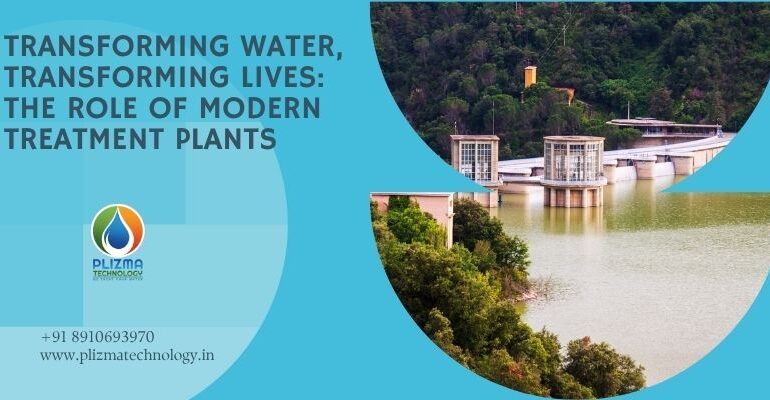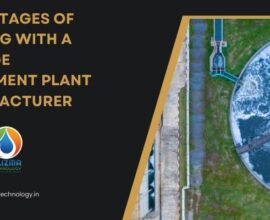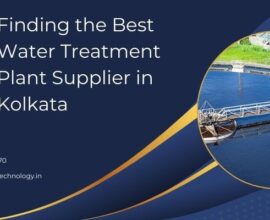Ever wondered what it takes to turn polluted or saline water into something safe, fresh, and usable? That’s exactly what a water treatment plant supplier in Kolkata does — blending science, sustainability, and technology to ensure every drop of water counts. In a world facing water scarcity, these providers are nothing short of life-savers.
The Rising Demand for Water Treatment Plants
Water treatment is no longer a luxury — it’s a necessity. According to the United Nations, by 2030, global water demand could exceed supply by 40%. This alarming figure highlights the growing need for effective and reliable treatment solutions across industrial, commercial, and municipal sectors.
India, in particular, faces a unique challenge. Rapid industrialization and urban growth have severely stressed water resources. Here’s where modern water treatment plant providers step in — ensuring safe, sustainable, and efficient water management for everything from factories to housing complexes.
How Water Treatment Plants Work
Though technology varies across facilities, the goal remains the same: to purify water and make it reusable. A modern treatment system generally follows a multi-step process:
- Screening: Removes large debris like plastics and leaves.
- Coagulation and Flocculation: Uses chemicals to bind small particles together.
- Sedimentation: Allows heavy impurities to settle at the bottom.
- Filtration: Eliminates microscopic particles through sand or membrane filters.
- Disinfection: Kills harmful pathogens using chlorine, UV, or ozone.
Each step is meticulously designed to ensure clean, safe, and compliant water output — whether for drinking, industrial use, or discharge.
Why Choosing the Right Provider Matters
Not all treatment systems are made equal. Selecting the right provider can mean the difference between efficient water reuse and expensive maintenance failures. When partnering with a professional water treatment plant provider, consider the following:
- Technology & Customization: The best systems are tailored to your water source, whether groundwater, surface water, or wastewater.
- Compliance & Certification: Ensure your provider adheres to environmental and safety standards such as those set by the U.S. Environmental Protection Agency (EPA) or India’s Central Pollution Control Board (CPCB).
- Maintenance Support: Efficient after-sales service ensures long-term system performance and reduced downtime.
Industries Benefiting from Water Treatment Plants
Water treatment systems serve as the backbone for numerous sectors, including:
- Manufacturing: Treats process water and recycles waste streams.
- Pharmaceuticals: Ensures ultra-pure water for medicine production.
- Food & Beverage: Maintains hygiene standards and product consistency.
- Real Estate & Municipal: Provides clean water for households and communities.
The Sustainability Angle
With climate change intensifying and groundwater levels depleting, sustainable water treatment isn’t just smart — it’s crucial. Many modern plants now incorporate renewable energy sources, zero-liquid discharge (ZLD) technologies, and smart IoT monitoring systems. This not only conserves water but also minimizes the environmental footprint of industrial operations.
In Kolkata and across India, companies are increasingly opting for green water solutions that align with both operational goals and environmental ethics — a win-win for business and nature alike.
Cost Factors of Water Treatment Systems
The price of a water treatment plant depends on capacity, type (RO, ETP, STP), level of automation, and water quality parameters. While small-scale systems can start at ₹1 lakh, industrial-grade solutions can range into several crores. But considering their lifespan and sustainability benefits, the investment often pays off in the long term through water savings and compliance benefits.
FAQs About Water Treatment Plants
1. What types of water treatment plants are available?
Common types include Reverse Osmosis (RO) plants, Effluent Treatment Plants (ETP), Sewage Treatment Plants (STP), and Demineralization (DM) units. Each serves a distinct purpose depending on water quality and usage.
2. How often should a treatment plant be maintained?
Regular maintenance every 3–6 months ensures optimal performance, prevents clogging, and extends system life. Some advanced plants offer automated self-cleaning features.
3. Is treated water safe for drinking?
Yes — if it meets the required safety standards. Drinking water treatment systems are designed to remove bacteria, heavy metals, and chemicals, ensuring full compliance with WHO norms.
4. How can industries reduce wastewater discharge?
By adopting Zero Liquid Discharge (ZLD) technology, industries can recycle and reuse almost 95% of their wastewater, dramatically reducing environmental impact.
Final Thoughts
Clean water is the foundation of a healthy, sustainable world. Whether for industries or communities, partnering with a reliable water treatment plant provider isn’t just a business decision — it’s a commitment to the planet. As India steps into a more water-aware future, innovation, responsibility, and technology will continue to shape how we treat every drop.





